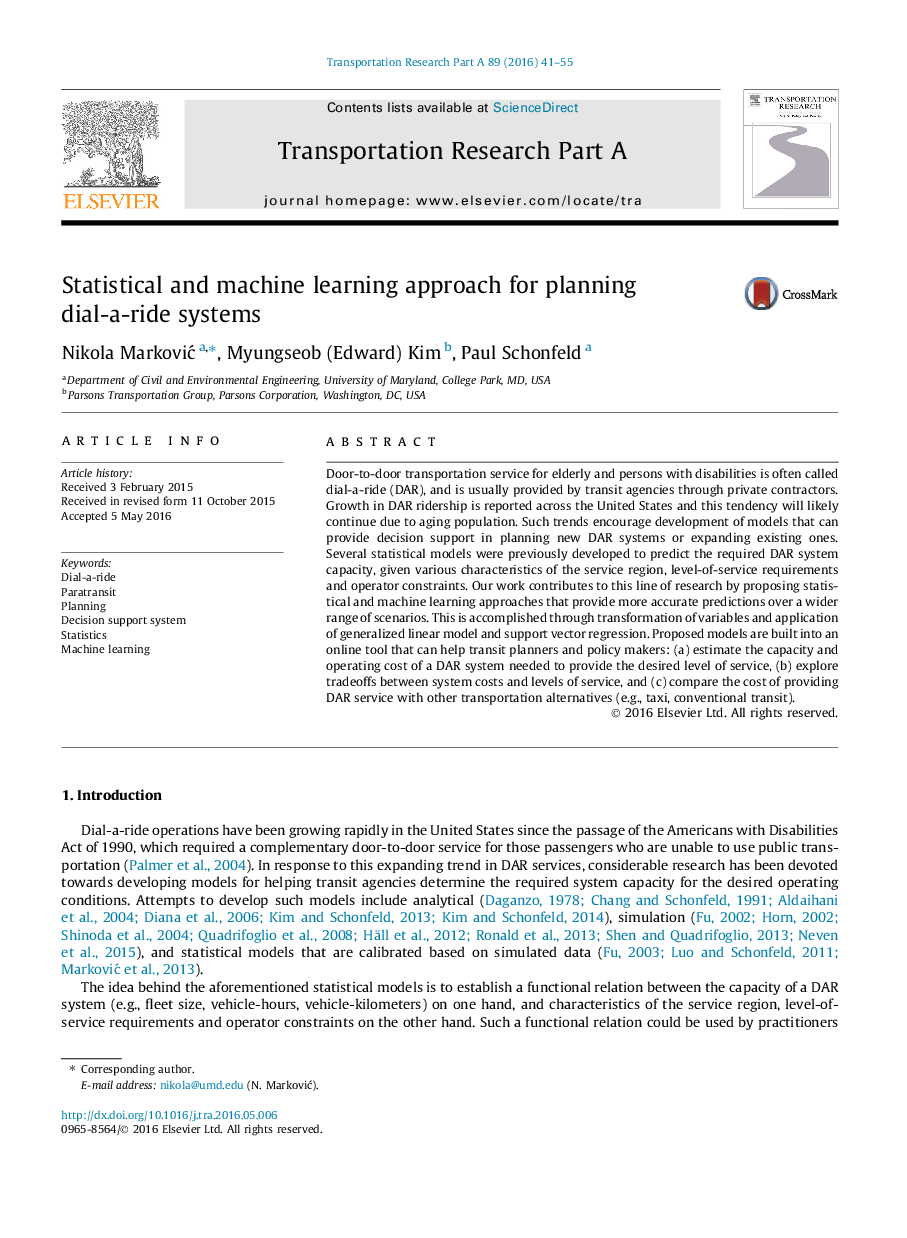| Article ID | Journal | Published Year | Pages | File Type |
|---|---|---|---|---|
| 6780830 | Transportation Research Part A: Policy and Practice | 2016 | 15 Pages |
Abstract
Door-to-door transportation service for elderly and persons with disabilities is often called dial-a-ride (DAR), and is usually provided by transit agencies through private contractors. Growth in DAR ridership is reported across the United States and this tendency will likely continue due to aging population. Such trends encourage development of models that can provide decision support in planning new DAR systems or expanding existing ones. Several statistical models were previously developed to predict the required DAR system capacity, given various characteristics of the service region, level-of-service requirements and operator constraints. Our work contributes to this line of research by proposing statistical and machine learning approaches that provide more accurate predictions over a wider range of scenarios. This is accomplished through transformation of variables and application of generalized linear model and support vector regression. Proposed models are built into an online tool that can help transit planners and policy makers: (a) estimate the capacity and operating cost of a DAR system needed to provide the desired level of service, (b) explore tradeoffs between system costs and levels of service, and (c) compare the cost of providing DAR service with other transportation alternatives (e.g., taxi, conventional transit).
Related Topics
Physical Sciences and Engineering
Engineering
Civil and Structural Engineering
Authors
Nikola MarkoviÄ, Myungseob (Edward) Kim, Paul Schonfeld,
